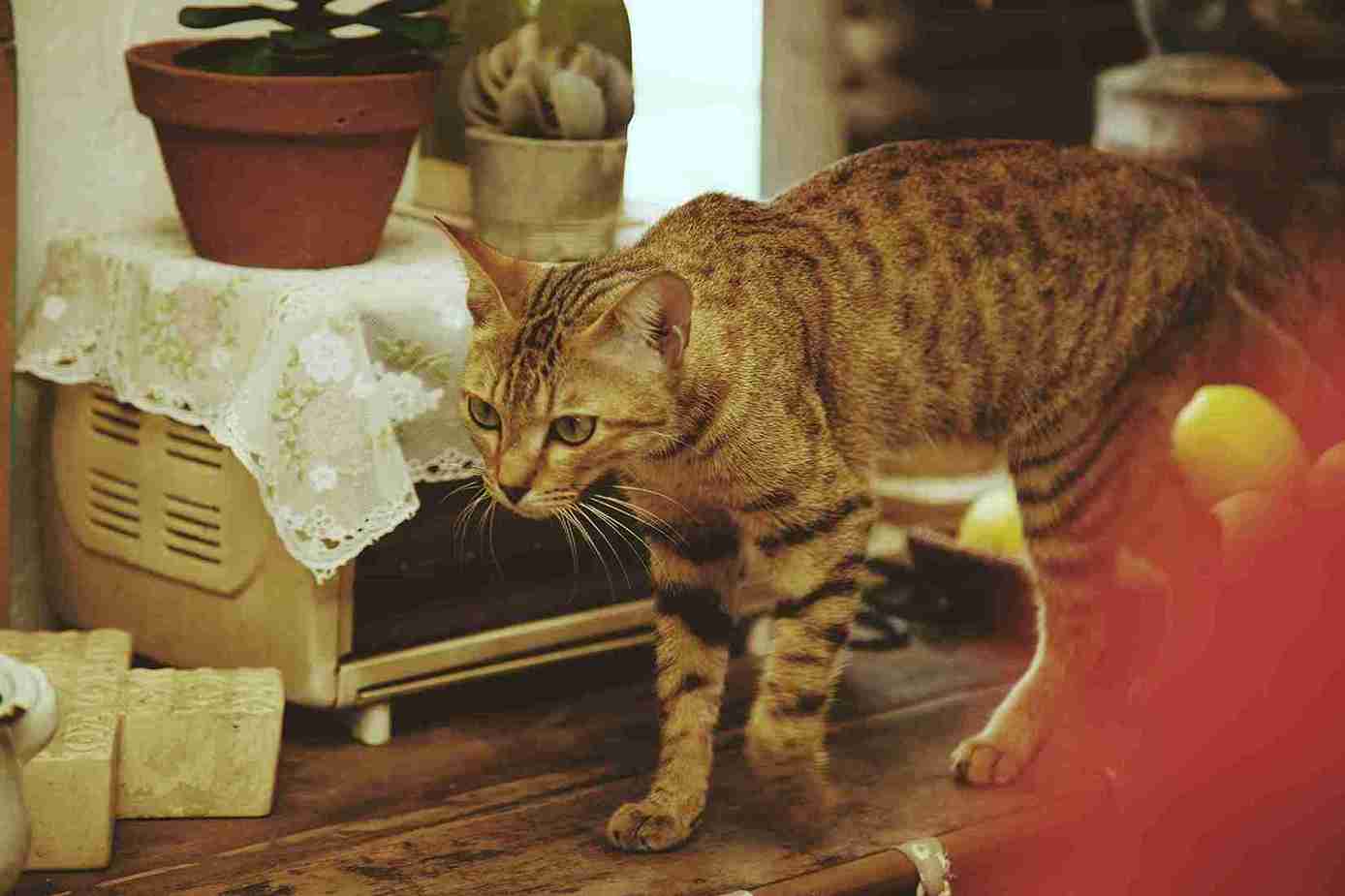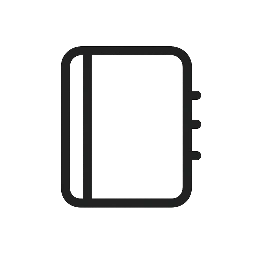Introduction: Why Cat Grooming Products Matter
Most people think grooming is only for long-haired cats or show cats—but that’s not true at all. Every cat, even short-haired indoor ones, needs regular grooming. They also need the right grooming products to stay healthy and comfortable. Grooming is not just about looking pretty… It’s an important part of your cat’s overall health and well-being.
Cats groom themselves, but they can’t match the benefits of human grooming. This is especially true for loose fur, dead skin, nails, ear debris, and dirt buildup. That’s where the right cat grooming tools come in.
Using the right grooming products helps your cat’s coat stay healthy. It also reduces shedding, prevents hairballs, and strengthens your bond. When you brush, clean, or trim your cat gently, you’re not just doing a “task”—you’re connecting with your pet in a calming, loving way.
Using the right tools makes grooming easier and less stressful for you and your kitty. Try cat brushes, grooming gloves, detangling combs, and nail clippers. Also, choose pet-safe products for the best results.
And the best part? You don’t need to be a professional groomer to keep your cat looking and feeling great. All you need are smart choices.
And a good routine.
What Makes a Good Cat Grooming Product?
Not all pet products are created equal—and when it comes to your cat, quality is everything. So before you buy anything, ask yourself: What grooming products do cats really need?
A good cat grooming product should be:
✔ Safe
Always check that the product is pet-safe, non-toxic, and designed specifically for cats. Avoid products meant for dogs or humans—cats have different skin, coat, and grooming needs.
✔ High-Quality & Effective
Tools such as slicker brushes, shedding combs, and nail clippers need to be durable, easy to grip, and gentle on the skin. Cheap tools break easily and can hurt your cat.
✔ Cat-Friendly Design
Look for gentle bristles, rounded edges, ergonomic handles, and lightweight tools that won’t stress your cat. The best grooming tools work with your cat’s natural behavior, not against it.
✔ Gentle Ingredients (for shampoos & sprays)
If you’re using shampoo or grooming wipes, choose formulas that are:
- Hypoallergenic
- Free from alcohol, parabens, and harsh chemicals
- Designed for sensitive skin
These details matter, especially if your cat has allergies or dry skin.
✔ Easy to Use at Home
No one wants grooming time to feel like a battle. The best grooming supplies for cats are easy to use. They require simple handling and little cleanup.
Choosing pet-safe grooming products isn’t just easy—it’s key to your cat’s health now and in the future. When you invest in better tools, grooming becomes easier, safer, and actually enjoyable.

Must-Have Cat Grooming Tools Every Owner Needs
A lot of people think cats don’t need grooming tools because “cats groom themselves,” but that’s only partially true. Yes, cats groom themselves, but they can’t get rid of all loose hair, trim their nails, or fix tangles. That’s why the right cat grooming products are important. A good grooming routine depends on using the right tools for the job, especially if you want to reduce shedding and keep your cat’s coat healthy.
Below are the essential grooming tools every cat owner should have at home:
3.1 Cat Brushes & Combs
The first step in any grooming routine is brushing—and trust me, the right brush makes a huge difference.
✔ Slicker Brush for Cats
Perfect for everyday brushing. A slicker brush helps remove loose fur, tiny knots, and surface debris without hurting your cat. It’s a must-have tool for preventing mats.
✔ Soft Bristle Brush
If your cat has sensitive skin or hates being brushed, start with a soft bristle brush. It helps distribute natural oils and keeps the coat shiny and smooth. It’s also great for kittens and short-haired cats.
✔ Shedding Tools for Cats
Shedding can be a nightmare—fur on clothes, furniture, and even in your coffee. A good shedding tool removes loose undercoat before it spreads everywhere, making grooming way easier.
✔ Long-Haired vs Short-Haired Brushes
One-size-fits-all does NOT apply to cat grooming.
- Long-haired cats (like Persians or Maine Coons) need detangling combs and slicker brushes.
- Short-haired cats do best with soft bristle brushes and shedding blades.
If you own a fluffy cat, look for the best grooming brushes for fluffy cats designed to reach deep into the coat without pulling.
3.2 Deshedding Tools
Some cats shed more than others—especially seasonal shedders or long-haired breeds. That’s when deshedding tools become a lifesaver.
✔ Tools for Heavy Shedders
Heavy shedders need professional-style tools that remove loose undercoat efficiently. These tools significantly reduce hairballs, mats, and shedding.
✔ Furminator-Type Products
These tools are designed to reach deep layers of fur and pull out loose hair safely. They’re extremely effective for double-coated cats.
✔ Best Cat Grooming Products for Shedding
When searching for deshedding tools, look for:
- Stainless steel teeth
- Comfortable handles
- Cat-safe grooming edges
- Tools made specifically for cats (not dogs)
3.3 Cat Nail Clippers & Trimmers
Overgrown nails can be painful and even dangerous. Your cat can snag carpet, furniture, or scratch themselves. That’s why nail trimming is an essential grooming step.
✔ Safe Trimming Tools
Use nail clippers designed for cats—preferably ones with a safety guard, non-slip grip, and sharp, curved blades.
✔ How to Clip at Home
- Start when your cat feels relaxed
- Hold the paw gently
- Only trim the sharp tip (avoid the pink “quick”)
- Go slow and reward your cat afterward
✔ Safest Nail Clippers for Cats
Look for clippers that are:
- Vet approved
- Easy to hold
- Quiet and lightweight
- Designed to prevent cutting too deeply
3.4 Grooming Gloves & Self-Grooming Tools
Some cats absolutely hate traditional brushes. If your cat runs away every time you pull out a comb, grooming gloves can save the day.
✔ Perfect for Cats Who Hate Brushes
Grooming gloves allow you to pet your cat while collecting loose fur at the same time. It feels natural to them and reduces grooming anxiety.
✔ Easy Bonding Experience
Gloves + cuddles = way better grooming experience. Every swipe removes loose hair and stimulates natural oils—without the stress.
Self-grooming tools, like wall-mounted brushes, are perfect for independent cats. They love to rub and scratch against everything.
Best Cat Shampoos & Cleaning Products
Another common myth: “Cats don’t need baths.” Some cats, like long-haired, oily-coated, or allergy-prone ones, really benefit from occasional baths. Using pet-safe grooming products makes this effective.
Not all shampoos are safe for cats, so choosing the right one matters.
✔ Natural Cat Shampoos
Natural cat shampoos are made with gentle ingredients like aloe, oatmeal, coconut oil, and plant extracts. They’re ideal for routine cleaning without irritating your cat’s skin.
✔ Hypoallergenic Cat Shampoo
If your cat has sensitive skin or allergies, go for a hypoallergenic shampoo for sensitive cats. These formulas avoid perfumes, dyes, and harsh chemicals.
They’re especially useful for:
- Cats with itchy skin
- Grooming-related allergies
- Senior cats with dry skin
✔ Medicated vs Everyday Grooming Sprays
- Medicated shampoos help treat fungal infections, bacteria, or skin issues (only use under vet guidance)
- Everyday grooming sprays help freshen the coat, reduce static, and minimize odors without a full bath
Choose products labeled cat-safe, paraben-free, and vet-approved. Never use human or dog shampoos on cats—it can be toxic.
Grooming Products for Long-Haired vs Short-Haired Cats
A lot of people assume all cats can use the same grooming supplies, but that’s a huge mistake. Long-haired and short-haired cats have different coats, grooming needs, and personalities. To keep your cat’s fur healthy, reduce mats, and minimise shedding, choose the right grooming supplies based on their coat length.
✔ Grooming Tools: What’s Different?
Long-haired cats like Persians, Ragdolls, and Maine Coons need:
- Slicker brushes
- Wide-tooth combs
- Detangling spray
- Deshedding tools
- Mat removers
These tools reach deep into thick fur, remove tangles, and prevent mats from forming.
Short-haired cats like British Shorthairs or American Shorthairs don’t need heavy-duty tools, but they still shed. Their best tools include:
- Soft bristle brushes
- Short-coat grooming gloves
- Gentle deshedding blades
✔ How Often Should You Groom?
- Long-haired cats → Daily or every other day
- Short-haired cats → 2–3 times a week
Skipping grooming for long-haired breeds can cause painful mats. So, being consistent is key.
✔ Product Types That Work Best
- Best Brushes: Slicker brushes for long coats and bristle brushes for short coats
- Best Shampoos: Hypoallergenic or moisturizing shampoos suit both types. However, long-haired cats might need conditioning products.
- Detanglers: A must-have for fluffy cats to keep fur soft and manageable
Using the right grooming products keeps your cat’s fur healthy. It also prevents hairballs, reduces shedding, and gives your cat a freshly groomed look every day.
Budget vs Premium Cat Grooming Supplies
Many owners think they need expensive tools to groom their cat properly, but that’s not true. You can groom your cat at home using affordable grooming products that work just as well as professional-grade ones—if you choose wisely.
✔ Affordable Cat Grooming Kits for Home Use
If you’re a beginner or on a budget, you can start with:
- Basic grooming comb + brush combo
- Budget-friendly nail clippers
- Grooming gloves
- Affordable grooming sprays
These kits usually include grooming essentials without the extra cost. They’re also great for new cat owners who don’t want to invest too much right away.
✔ Top-Rated Professional Grooming Tools
If you need tools that last longer and perform better, think about buying premium products made for groomers, like:
- Stainless steel deshedding tools
- Professional-grade slicker brushes
- High-quality curved nail clippers
- Long-lasting detangling sprays
Premium tools often last longer, feel better in the hand, and are more comfortable for your cat.
✔ Budget vs Premium: What Should You Choose?
Your choice depends on:
- Your cat’s coat length
- Grooming frequency
- Your budget
- Your experience
A person with a long-haired cat that mats easily needs better tools. In contrast, someone with a short-haired indoor cat can get by with cheaper options.
The good news? No matter if you’re getting budget grooming kits or premium tools, the key is to use them regularly. No product works if it stays in the drawer.
Grooming Products for Special Needs Cats
A lot of people assume grooming is the same for every cat, but that couldn’t be further from the truth. Special needs cats need special grooming products. Using regular tools can cause stress, allergies, or even pain. Whether your cat is allergic, elderly, or anxious, the products you use matter just as much as the grooming routine itself.
✔ Grooming for Allergic Cats
Allergic cats need special grooming products. They require hypoallergenic items, fragrance-free shampoos, and ultra-soft brushes to prevent irritation. Avoid common triggers like artificial dyes, sulfates, or heavy fragrances.
Look for:
- Oatmeal-based hypoallergenic shampoos
- All-natural cat wipes
- Anti-itch grooming sprays
These pet-safe grooming products soothe the skin and prevent allergic flare-ups.
✔ Grooming for Senior Cats
Senior cats often struggle with mobility and can’t groom themselves like they used to. They may develop mats, greasy fur, or dandruff. Gentle grooming products are best here.
Recommended tools:
- Soft silicone brushes
- Lightweight combs
- Conditioning sprays
- Warm water wipes
Keep grooming sessions short and calm. Older cats need comfort and patience more than anything.
✔ Grooming for Anxious Cats
Anxious or reactive cats don’t respond well to strong scents or loud grooming tools. You’ll need cat-friendly grooming solutions that reduce stress.
Try:
- Grooming gloves instead of brushes
- Slow, short grooming sessions
- Natural calming sprays and lavender-free wipes
- Catnip or treat distraction
Using natural & gentle grooming solutions helps avoid overstimulation and builds trust over time.
✔ Eco-Friendly Grooming Products
More cat owners are choosing eco-friendly grooming products. These products use sustainable, biodegradable, and cruelty-free ingredients. These products are especially great for cats with allergies or chemical sensitivities. Look for packaging made from recycled materials and formulas free from harsh chemicals.
Step-by-Step DIY Cat Grooming Routine (Using the Right Products)
People often think grooming at home is overwhelming, but it’s actually easy—if you have the right tools and follow a simple routine. You don’t need to be a grooming expert to keep your cat clean, comfortable, and healthy.
Here is a simple DIY grooming routine you can follow:
Step 1 – Brush
Start with a gentle brush to remove loose fur. For long-haired cats, use a slicker brush. For short-haired cats, try a bristle brush or grooming glove.
Step 2 – Detangle
If your cat has fluffy or long fur, use a detangling spray and a wide-tooth comb to loosen knots before they turn into painful mats.
Step 3 – Wash
Use a natural or hypoallergenic cat shampoo. Make sure it’s made for cats, not dogs or humans. Avoid getting soap in the eyes and ears. Rinse well and towel dry.
Step 4 – Trim Nails
Use the safest nail clippers for cats, trim only the sharp tip, and avoid the quick. If unsure, take it slow and reward your cat with treats.
Step 5 – Clean Paws & Face
Use cat-safe wipes to remove dirt, debris, or tear stains from paws and face. Never use human products or baby wipes.
Tips for Reducing Stress & Hairballs
- Groom in short sessions
- Use treats or toys
- Groom after playtime when your cat is relaxed
- Keep tools soft and quiet
- Brush often to reduce shedding and prevent hairballs
Common Questions About Cat Grooming Products
Many cat owners think only long-haired or outdoor cats need grooming, but that is not true. Even indoor, short-haired cats need regular grooming. It cuts down on shedding, stops mats, boosts skin health, and strengthens your bond with them. Grooming isn’t just about looks—it is about health and hygiene. Below are some of the most common questions people ask about cat grooming products and tools.
Do indoor cats really need grooming?
Yes, absolutely. Indoor cats still shed and create dander. They can also get knots in their fur, especially if they groom a lot or do not move around much. Brush your pet regularly with slicker brushes, grooming gloves, or deshedding tools. This helps prevent hairballs, mats, and skin irritation. Indoor cats benefit from waterless shampoos, gentle wipes, and nail-trimming tools. These help keep them clean and comfortable.
How often should you bathe a cat?
Cats are naturally clean animals, so they don’t need frequent baths like dogs do. Most cats need a bath every 4 to 6 weeks. This depends on their coat type, lifestyle, allergies, or grooming needs. Use hypoallergenic cat shampoo or natural cat shampoo, especially for sensitive skin. Always avoid human shampoos—they can strip natural oils and irritate your cat’s skin.
What’s the best tool for matted fur?
For mild mats, a slicker brush or dematting comb works well. For severe mats, a mat splitter or professional deshedding tool may be needed. If mats are tight to the skin, never cut them with scissors—it’s too easy to injure your cat. In tough cases, seek help from a professional groomer or vet.
Final Buying Guide: How to Choose the Best Cat Grooming Products
Many people think any brush or shampoo suits all cats, but that’s a major grooming mistake. The best cat grooming products depend on your cat’s coat type, skin, mood, and how well they handle grooming. Choosing the wrong tools can cause irritation, stress, or damage to their coat.
Step-by-Step Checklist for Choosing Grooming Products
Use this quick guide when selecting feline grooming products:
Coat Length & Type
- Short-haired cats: rubber brushes, soft bristle brushes, and grooming gloves.
- Long-haired cats → slicker brushes, wide-tooth combs, dematting tools, de-shedding blades
- Heavy shedders → high-quality de-shedding products like Furminator-style tools
Skin & Health Needs
- Allergies or eczema → hypoallergenic shampoo, natural, unscented wipes.
- Dandruff or irritated skin → oatmeal shampoo or medicated sprays.
- Senior or arthritic cats → lightweight grooming tools, soft brushes, non-slip grips
Temperament & Behavior
- Nervous or anxious cat → grooming gloves, gentle mitts, calming sprays
- Cats that hate baths → waterless foams, dry shampoo, leave-in conditioning sprays
- Aggressive toward clippers → grinder-style nail trimmers or vet assistance
Quick Beginner Recommendations
If you’re new to grooming, start with:
- A slicker brush (works for most cats)
- Grooming gloves (great for bonding and nervous cats)
- Hypoallergenic shampoo (safe for all coat types)
- Cat nail clippers with a safety guard
- A gentle leave-in spray for freshening fur between baths
These basics will help you create a solid grooming routine. This way, neither you nor your cat will feel overwhelmed.


Leave a Reply